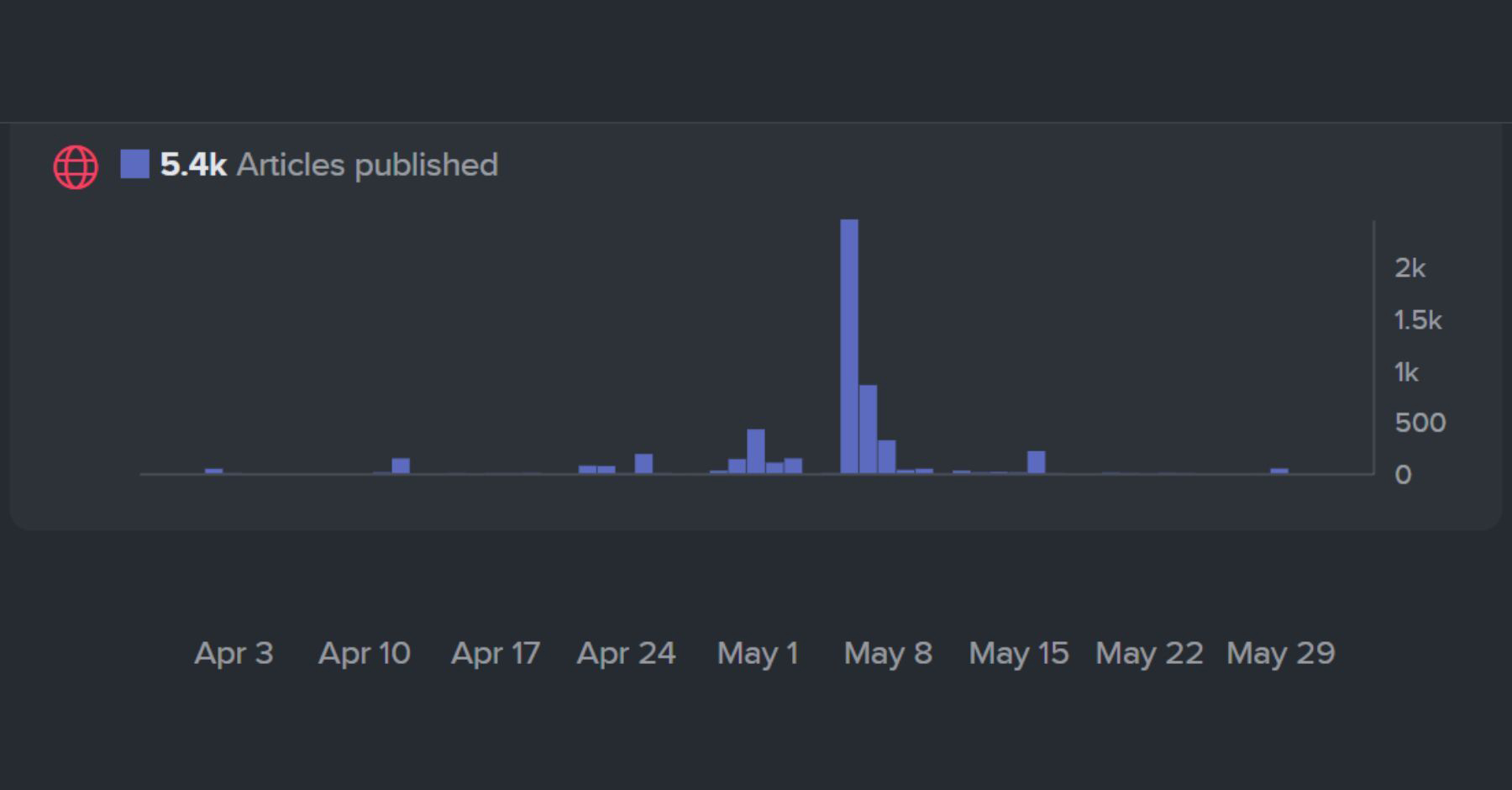If you’re interested in media coverage at RSAC, it can help to look at what the media have covered at the show in the past.
As usual, past performance does not guarantee future results. A lot has changed in just the last month, and there are new topics and trends on the media’s radar headed into RSAC 2025.
But a look back at what consistently gets coverage at the show and which stories earn the most engagement can reveal your best opportunities this year, both during and after RSAC.
We used NewsWhip Spike to look at media coverage of RSAC over the past three years, focused on the month before and after the show. For 2023 and 2024, that was April 1 to May 31. For 2022, it was May 1 to June 30. We narrowed the list to articles that had at least 1 engagement — a comment, share, reaction, etc., which is a good proxy for how much attention the news received.
The data shows several interesting trends across the years that can give you a sense of the perennial topics media are interested in at the show, and the opportunities for you to weave your story into trends around these topics.
Here’s what we found:
1. AI has dominated media attention, but engagement has dropped off
Among our sample sets, the number of articles about AI surged from 1 in 2022 to 8 in 2023 and 20 in 2024 (remember, this is among articles with at least one engagement during the two-month period before and after the show). Engagement skyrocketed from 1 in 2022 to 1,334 in 2023, before dipping to 159 in 2024 as some of the novelty wore off.
Expect the AI story to continue evolving this year, as AI agents could be a key focus of media at the show — Sam Sabin of Axios and Steve Rosenbush of The Wall Street Journal both have it on their radar. We’ll have to see whether this new wrinkle is enough to push engagement higher again.
2. Government and policy news consistently drives attention
In 2022, articles covering the comments of the DNI and NSA and CISA officials drove 122 interactions across 5 articles. In 2023, the U.S. deploying cyber forces to fight hackers was the big story, and this category saw 13 articles with 202 interactions. Last year, 8 articles drew 102 interactions.
This is one of the most consistent categories of coverage out of RSAC by number of articles and engagement, so listen for what agency officials are saying, what policies are new or shifting, and see if you can spot an opening for your own angle.
3. Roundups highlight what caught media attention
Across all three years, highlights from the show consistently saw coverage and engagement, with 4 articles in 2022, 5 in 2023, and 6 in 2024. Engagement was especially high in 2022 at an average of 49.5, and has leveled out the past couple years at 3-5 interactions on average. New products and startups to watch are two categories of roundup articles that have gotten the most engagement.
Even if you don’t win a spot in one of these highlights articles, these roundups show you what topics caught the media’s attention and can give you ideas for how to frame your story to play into the trends reporters are following after the show.
4. Keep an eye out for emerging topics or media storylines
In 2024, articles about 5G security received significant engagement, with an average of 45 interactions per article, one of the highest of the period we studied. The engagement was driven by three articles in Business Insider, part of a series around 5G and Connectivity, from the angles of how it changes security, strategic infrastructure, and real-world applications.
Look out for similar series from media or emerging topics mentioned in keynotes from government officials or name-brand companies. These are clues for opportunities that might align with your own narrative.
What your RSAC strategy should look like
Most companies walk into RSAC focused on what they want to say — their latest product, their newest research, their funding announcement. That’s fine. But it’s not enough. The media isn’t looking for your product. They’re looking for broader trends, surprising insights, and new twists or layers to ongoing stories.
This year, that might be AI agents or what Google’s $32 billion acquisition of Wiz says about where security is going next. It means knowing how reporters work, what they’ve written lately, and how to give them something fresh they can use.
That’s why planning ahead matters. The companies that break through often started preparing months before the show. They didn’t just think about what they wanted to say — they looked at what the media were already saying. That’s the kind of insight that should shape your entire PR strategy.
That’s the work we do with clients ahead of RSAC — building storylines that track with media interest, and evolving the strategy before, during, and after the show based on what we’re seeing in real time.
If you’re not getting that kind of guidance, or if you’re unsure how your RSAC media strategy stacks up, let’s talk.
